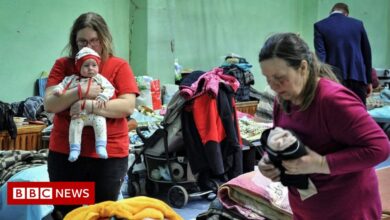COVID-19: WHO stresses the importance of sharing viral sequences

“Since the peak of the Omicron wave, the number of shared sequences has more than 90 percent offand the number of countries sharing the sequence has decreased by a third,” speak Tedros Adhanom Ghebreyesus, speaking during his latest press conference.
The head of WHO reiterated that the first sequence of SARS-CoV-2, the virus that causes COVID-19was shared with the world three years ago, which allowed the development of tests and vaccines against the disease.
“We call on all countries currently experiencing strong contagion to increase sequenceand to share those sequences” he say.
New variant review experts
One WHO The advisory group has published a review of the new sub-variant of Omicron, XBB.1.5, which first appeared last October.
Sequences have been reported from 38 countries, although mainly from the United States.
“Based on genetics and initial growth rate estimates, XBB.1.5 may contribute to increased morbidity,” said the Technical Advisory Group on Virus Evolution (TAG-VE).
“So far, the overall confidence in the assessment is low, as estimates of the growth advantage come from only one country, the United States of America.”
Unacceptable death rate
Tedros also emphasized the importance of testingthis is important to track variations and make sure those at risk get adequate care.
Since February 2022, the number of COVID-19 deaths reported each week has decreased by nearly 90%, but the number has fluctuated between 10,000 and 14,000 since mid-September.
“World can’t accept this death toll when we have the tools to stop them,” he said.
Last week, 11,500 people worldwide died from COVID-19, but “this number is almost certainly an underestimate due to the underreporting of COVID-related deaths in China. ,” he added.
Countries are also encouraged to provide better data on people dying from the disease. Currently, only 53 of the 194 countries provide data disaggregated by age and sex.
Most of the deaths were in the at-risk group, with people aged 65 and over accounting for nearly 90% of all deaths reported in the last six months of 2022.

A mother in Raqqa city, Syria, goes to get medicine for her child with diarrhea and is also taught how to disinfect water to prevent cholera.
Widespread cholera outbreak
Tedros begins the briefing by celebrating the end of Ebola disease in Uganda.
He also welcomed this week’s adoption of a Security Council Resolution expanding aid delivery across borders into northwest Syria from Türkiye in another six months.
Syria, Haiti and Malawi are among 31 countries battling a devastating cholera outbreak. more widespread and more dangerous than usual.
“While we have had large cholera outbreaks before, we have never seen such a large number of simultaneous outbreaks,” said the WHO chief.
“The common denominator of many of these outbreaks is climate-related eventssuch as storms, floods and droughts.”
China’s involvement continues
WHO continues to call for more information from China regarding the ongoing COVID-19 surge in the country.
The UN agency is working with authorities to fill important gaps, including understanding the transition dynamics, analysis of increases or decreases in hospitalizations, sequencing of micro- withdrawal and the difference in mortality between urban and rural areas.
“WHO still believes that deaths are underreported in China, and this is related to the definitions used but also to the need to encourage physicians and those reporting within the system. The public health system reports these cases and is not discouraged,” said Dr. Mike Ryan, Executive Director.
He also commended China’s efforts, citing measures such as expanding designated hospital beds in intensive care units and prioritizing the use of antiviral drugs in the early stages of the disease.
“There is also a change in definition from COVID pneumonia as a reportable disease to COVID infection as the primary basis for disease reporting, and we hope that will encourage more reporting – and reporting.” more to WHO about the actual situation on Dr. Ryan said.
Burden of ‘Long COVID’
Meanwhile, more research is still needed to better understand the burden of post-COVID-19 on human health globally.
Although many people recover from the disease, some patients have persistent symptoms across various organs of the body and over a long period of time leading to a condition, commonly known as “prolonged COVID”.
Experts from across WHO are working with partners worldwide in different types of clinical management of cardiovascular care, brain health and respiratory health.
“What we are targeting is making sure that there are recognition of post-COVID-19 status, where this can be described and analyzed,” said Dr. Maria Van Kerkhove, head of the agency on COVID-19.
WHO has published a case definition for persistent COVID, which is being adjusted to apply to children, but she said “more work needs to be done in this area, including recognition, research and rehabilitation.”
Wear a mask at home
WHO has encouraged people everywhere to still wear masks, for example in crowded rooms or in places with poor or unknown ventilation.
Dr Van Kerkhove explained that the transmission of the coronavirus depends on factors such as distance between people, context, ventilation, time spent in a particular location and mitigation measures in place. .
“There are some other factors that are also important, but Masks are one of the measures we recommend when you are indoors when it is not possible to keep your distance,” she speaks.
“This is one of the recommendations that we continue to advise on, and we are working with governments to regulate its use in the right kinds of contexts.”




